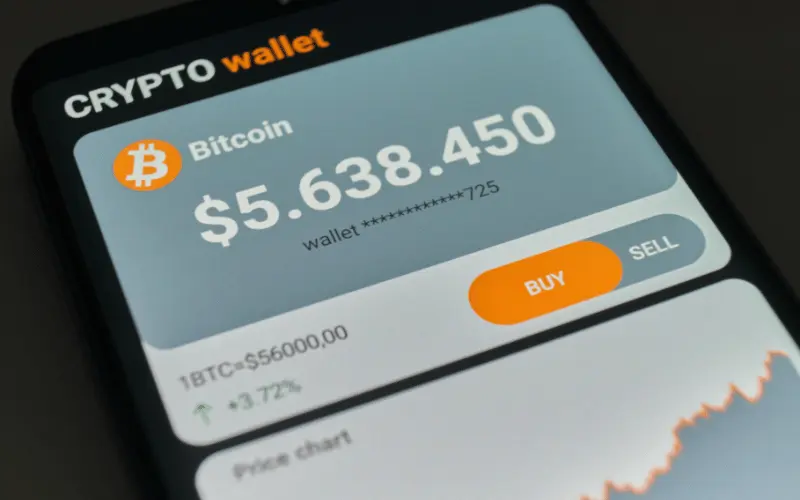Given the technological development in the world, many aspects of our lives have been fully affected and transformed. One such aspect was the management of funds. The digital wallet has become a reflection of recent developments in the banking and financial world. It provided an innovative and secure way to manage money and financial transactions easily anytime, anywhere. digital wallets allow individuals and companies to easily access and manage their money, both via Internet platforms and through smartphone applications. This modern technology also allows users to easily make electronic payments, track expenses, and manage investments, all with just one click.
With increasing demand for digital financial solutions and a shift towards a digital economy, the digital portfolio is a flexible and necessary tool in individuals’ and companies’ lives, and it is indispensable.

What is an electronic wallet or a digital wallet?
A digital wallet, or so-called “cryptocurrency portfolio”, is a digital tool or online service used for financial transactions. This service allows users to keep their digital money and make financial transactions simply and easily using the Internet. It also provides a level of security and convenience in making purchases, as these portfolios offer the advantage of paying at any time by mobile phone or computer, without the need to use credit cards. By linking the e-wallet to the user’s bank account to make purchases.
What features do e-wallets offer?
The e-wallet offers users a lot of benefits and features, which facilitate business delivery and shorten the time needed to make financial transactions, making their spread increase very quickly. Although the features offered by one portfolio are different, the features of the electronic wallet can be summarized as follows:
1. Enhance user comfort
The e-wallet facilitates financial transactions, online payments, and purchases without the need to use credit cards or cash. They are also used to buy from online stores as well. E-commerce platforms are available 24/7. In addition, electronic wallets offer the advantage of converting currencies from one wallet to another easily. All about the mobile phone, or the user’s computer.
2. Provide security
Most digital wallets provide a high level of protection, using advanced security features, such as Two-Factor authentication (2FA), or encryption. Or through biometric authentication. biometric authentication depends on the characteristics of the user’s body as a fingerprint, facial recognition, or sound. This protects users from thefts and phishing, preserving their money.
3. Fast Completion of Financial Transactions
One of the most important advantages of a digital wallet is that it avoids users waiting in long lines to buy different products. Any transaction can be easily done within seconds, and the user can send and receive funds within moments.
What are the cons of digital wallets?
1. Phishing
E-wallets do not provide protection and compensation in the event of a scam like phishing. Although banks offer this benefit to credit card users when purchases that are not made by the user are made.
2. Complexity
Some electronic wallets may have a complex interface, and are difficult for the user to use, especially those without technical expertise. Therefore, you may be the preserve of users of modern technology.
3. Incompatibility
Electronic portfolios may not be available and suitable for use in all countries. Not all stores may accept purchasing operations using these portfolios, which impedes their use.
4. How to choose the right electronic wallet?
The choice of a user-friendly electronic wallet depends on several factors. These factors follow the user’s needs, location, as well as the type of smartphone he owns. The security features that the user wants, and the cryptocurrencies supported by the wallet. As well as the type of cryptocurrencies he wants to store. and how difficult it is to use. This is in addition to the fees that the wallet charged.

What are the types of digital wallets?
There are three types of electronic wallets and they are selected according to the user’s desire and need. These are:
1. Open Wallet
This digital wallet is used for all kinds of currencies, and is highly flexible, allowing the withdrawal and transfer of funds to and from them, such as ICICI Pocket and M-pesa from Vodafone Idea.
2. Closed Wallet
This type of electronic wallet allows the user to make purchases on the website of the provider of this wallet only and does not allow the transfer or withdrawal of funds, such as MakeMyTrip, or BookMyShow.
3. Semi-closed wallet
This type of portfolio allows one to purchase goods, and do financial services, at merchants and listed sites only. This portfolio also allows money transfers but does not allow refunds or withdrawals. One of the most important examples is Paytam, PhonePe.
In conclusion, we can see how digital portfolios offer a convenient and effective solution for managing funds and financial transactions in the age of modern technology. This is through easy access, ease of use, and flexibility. Digital portfolios also help individuals and companies achieve their financial goals efficiently and seamlessly. As technology develops and the digital economy expands, digital portfolios are expected to continue to be increasingly important as an essential tool in our daily financial life.


